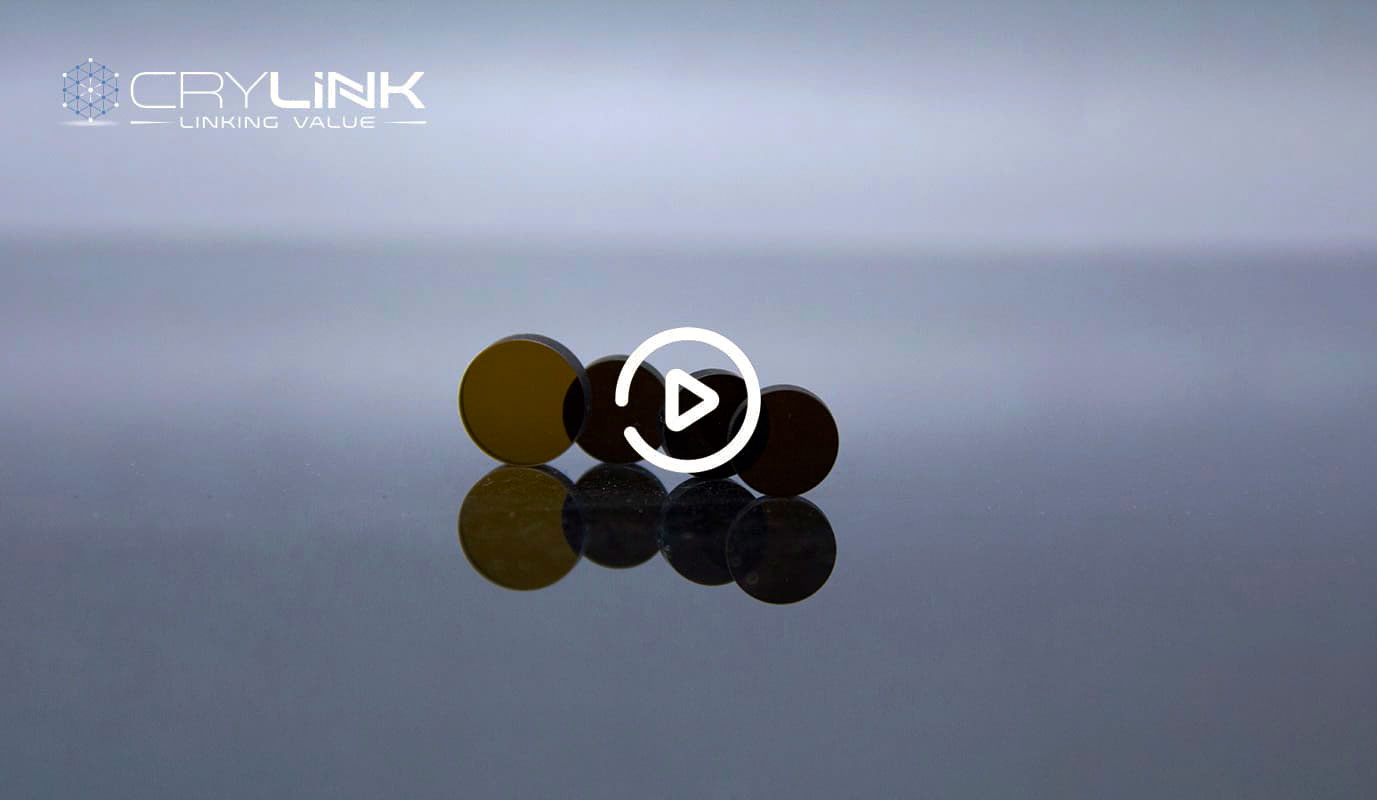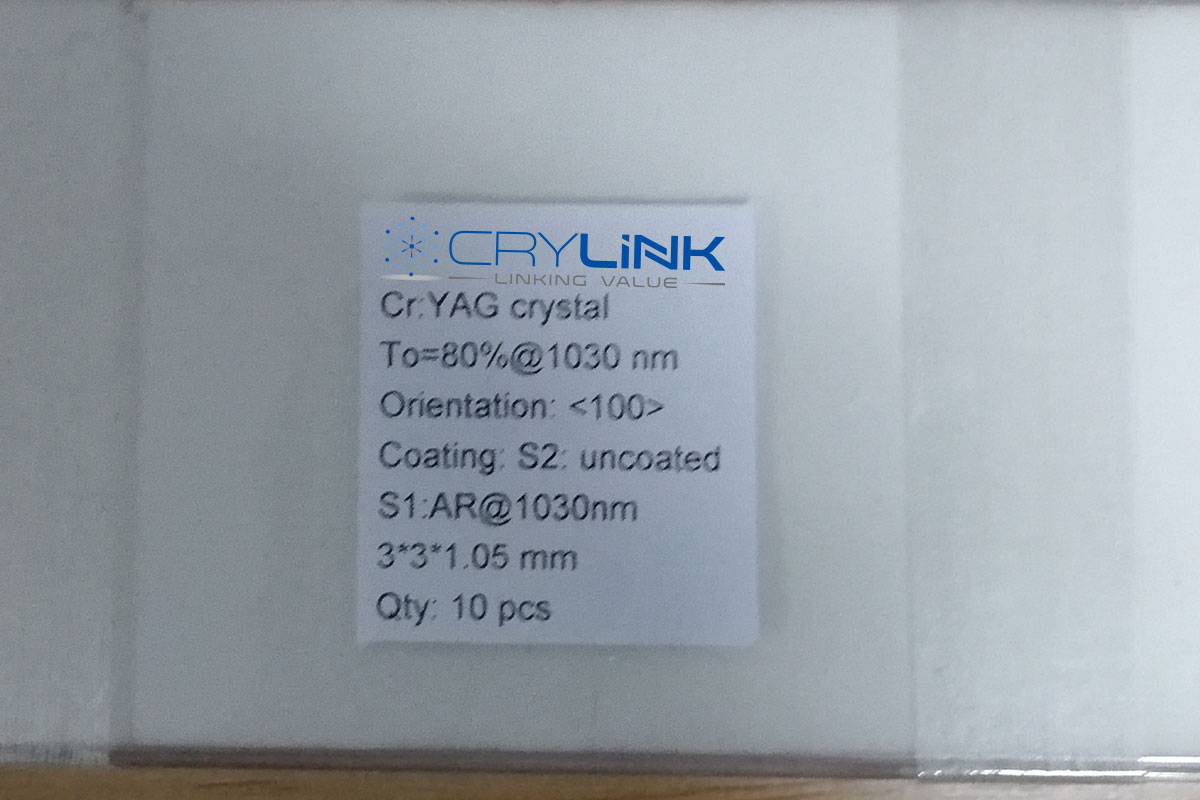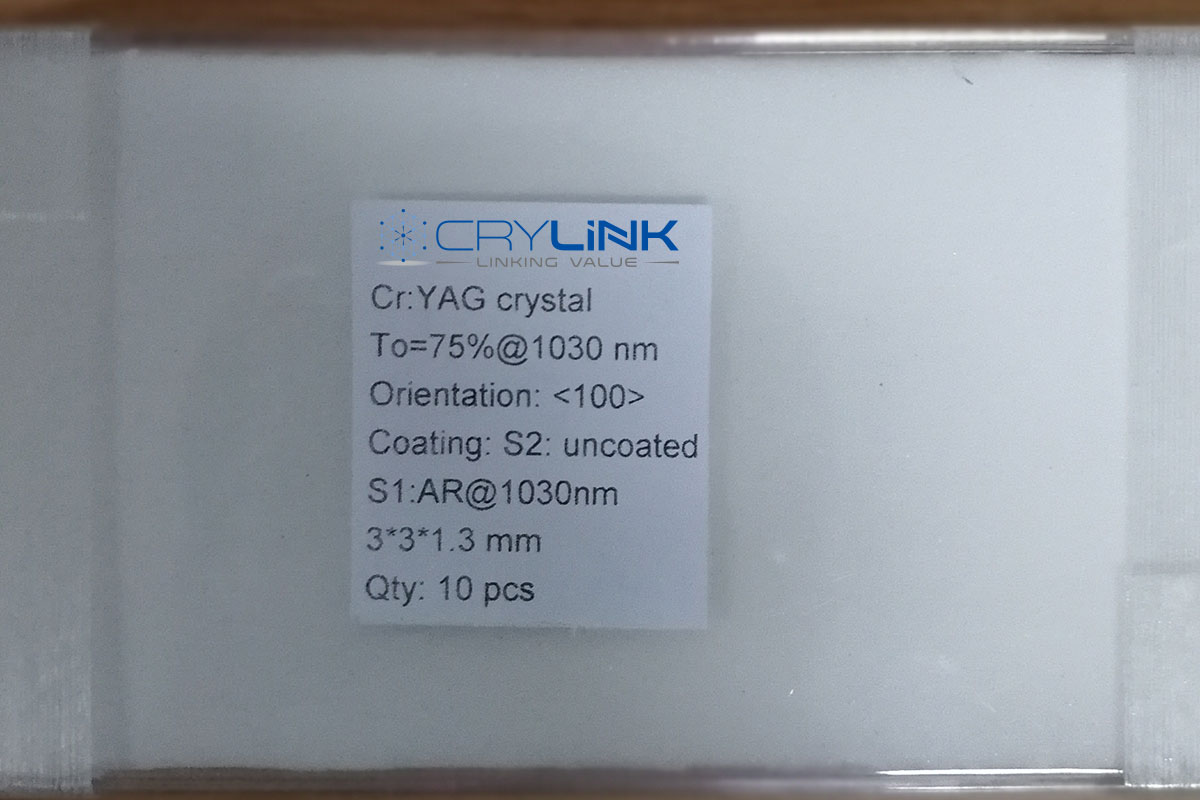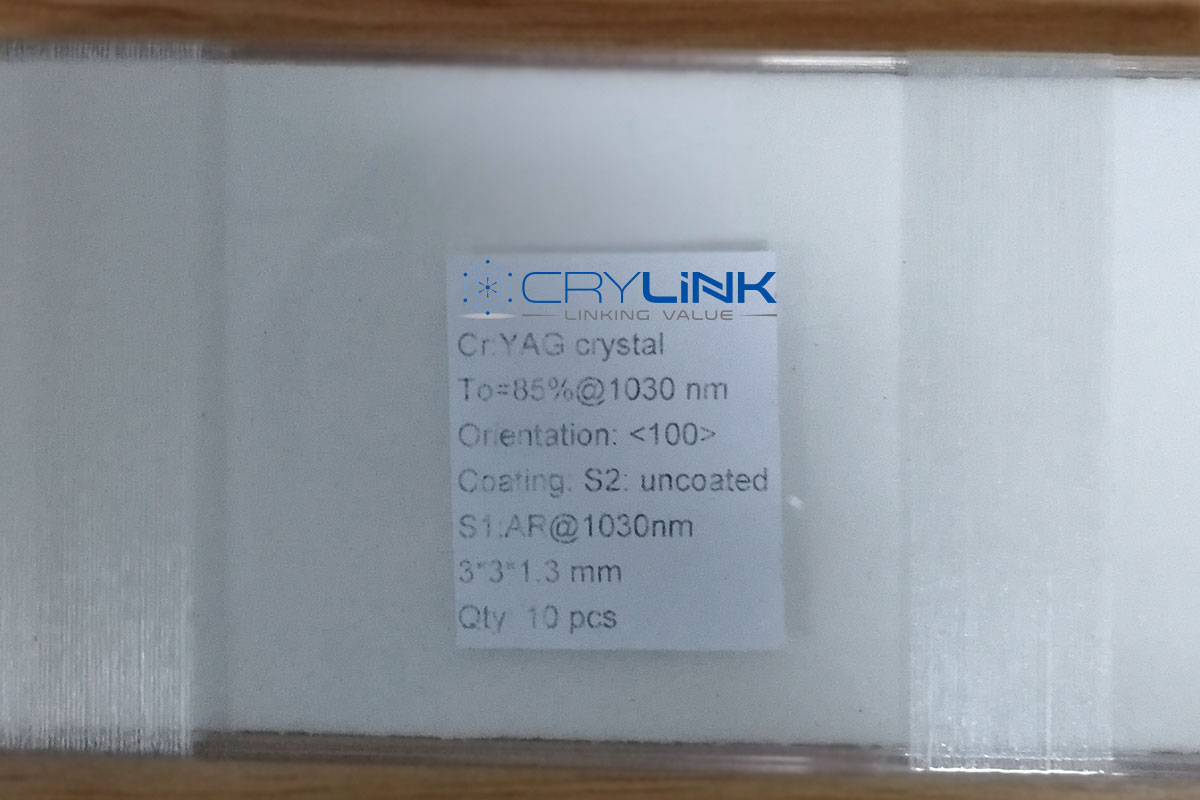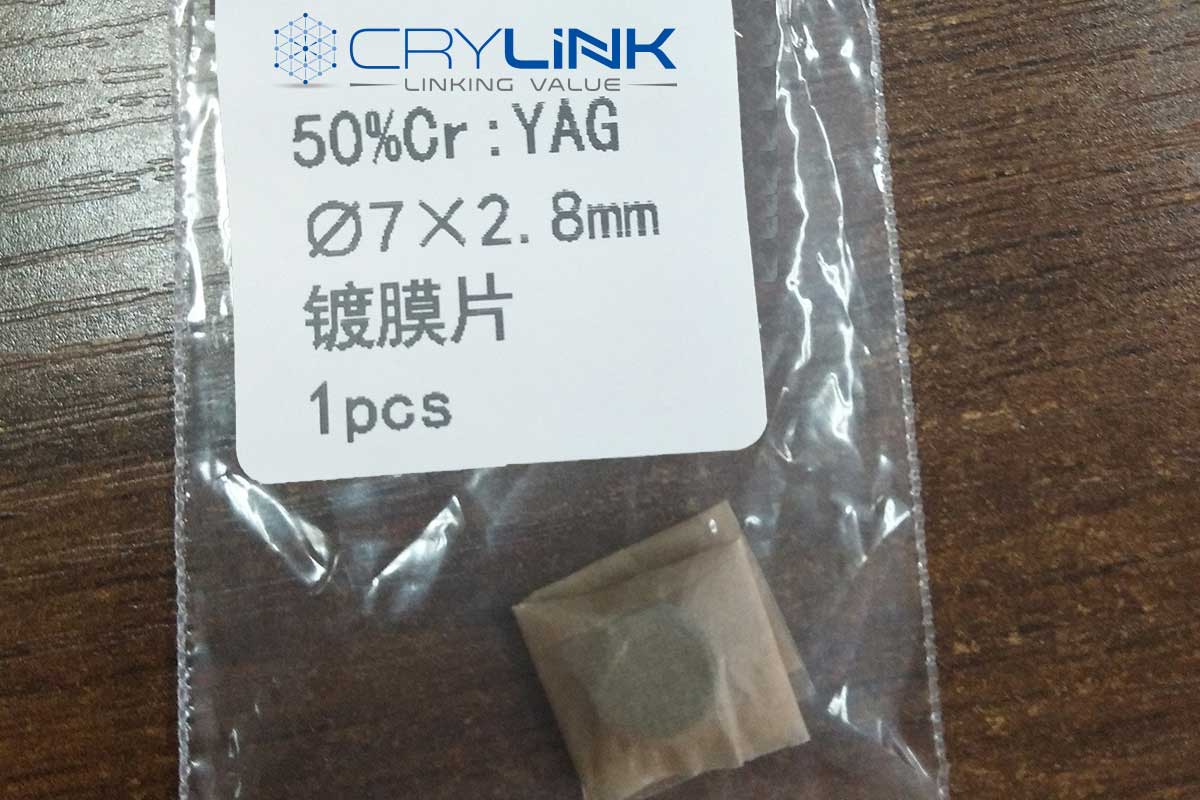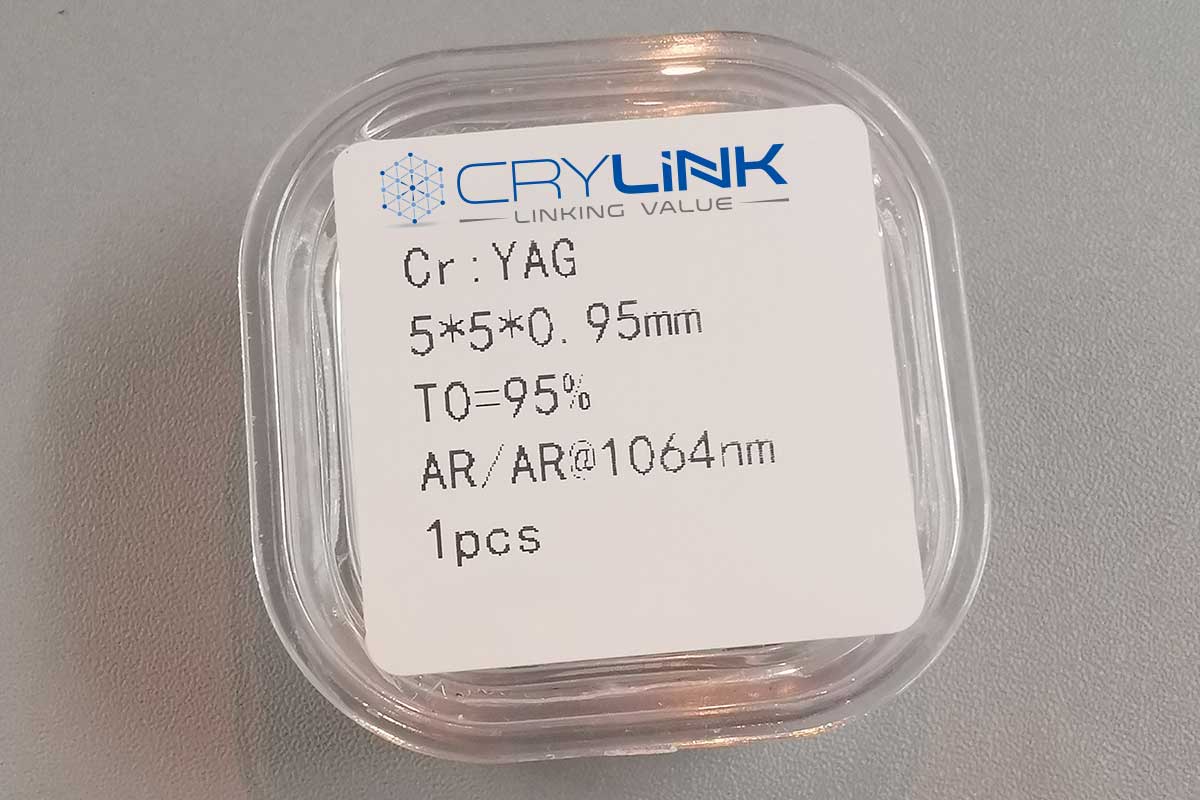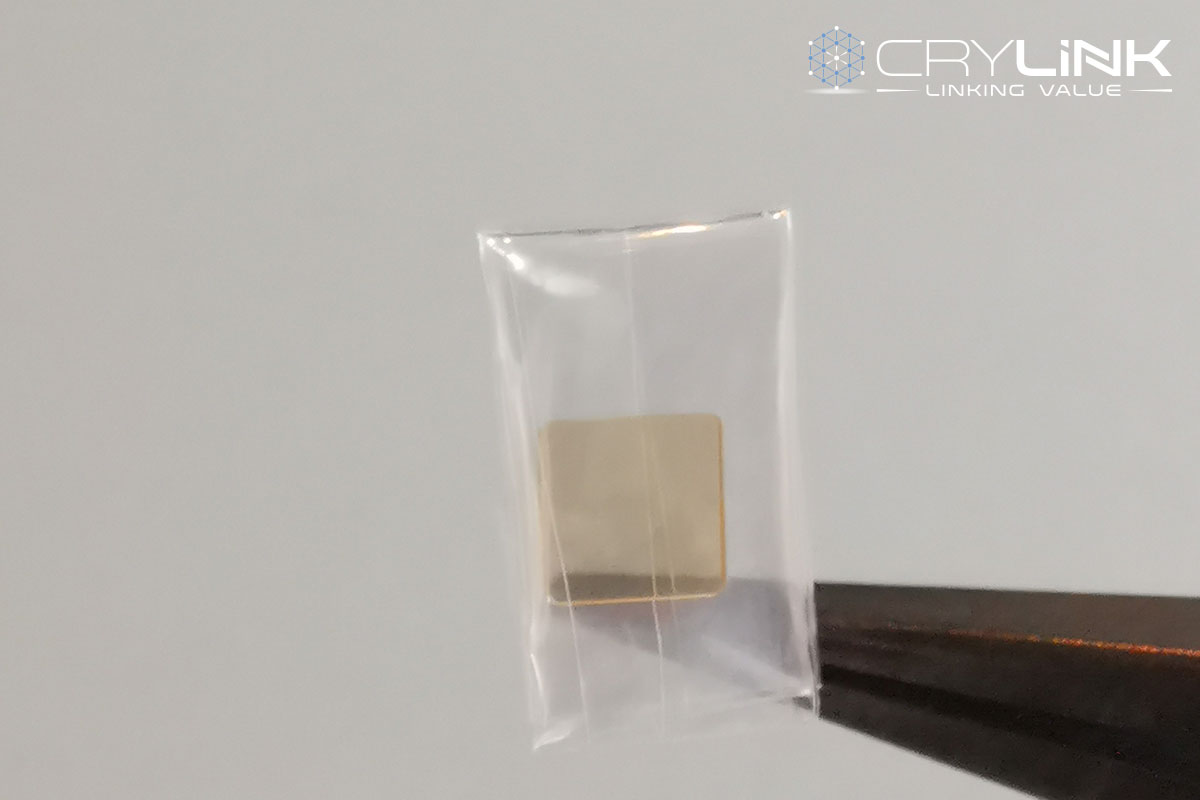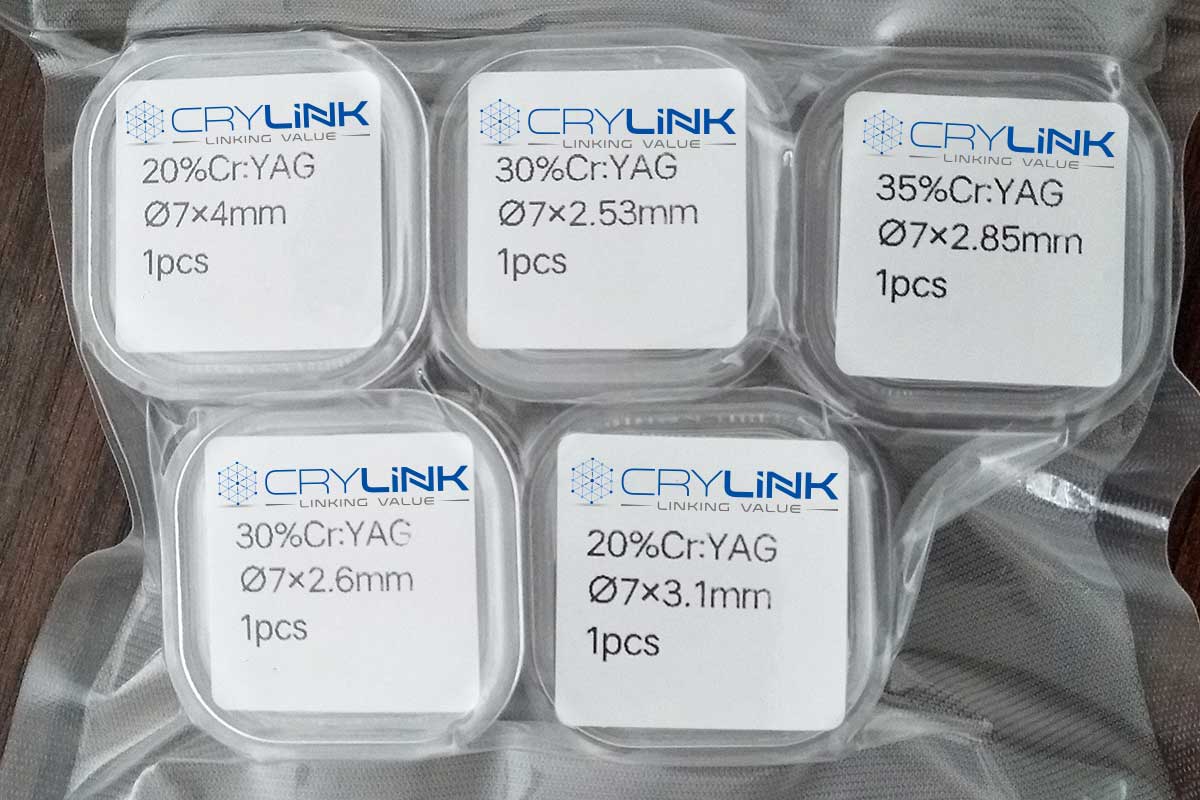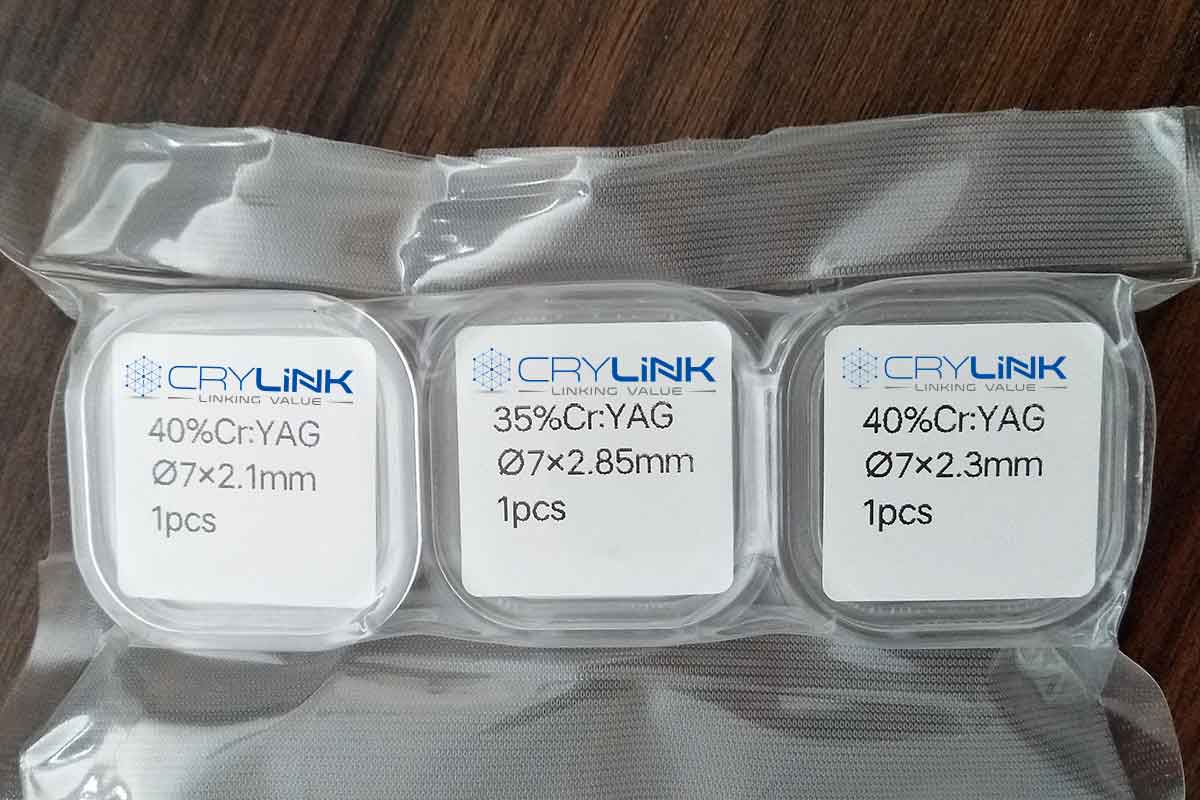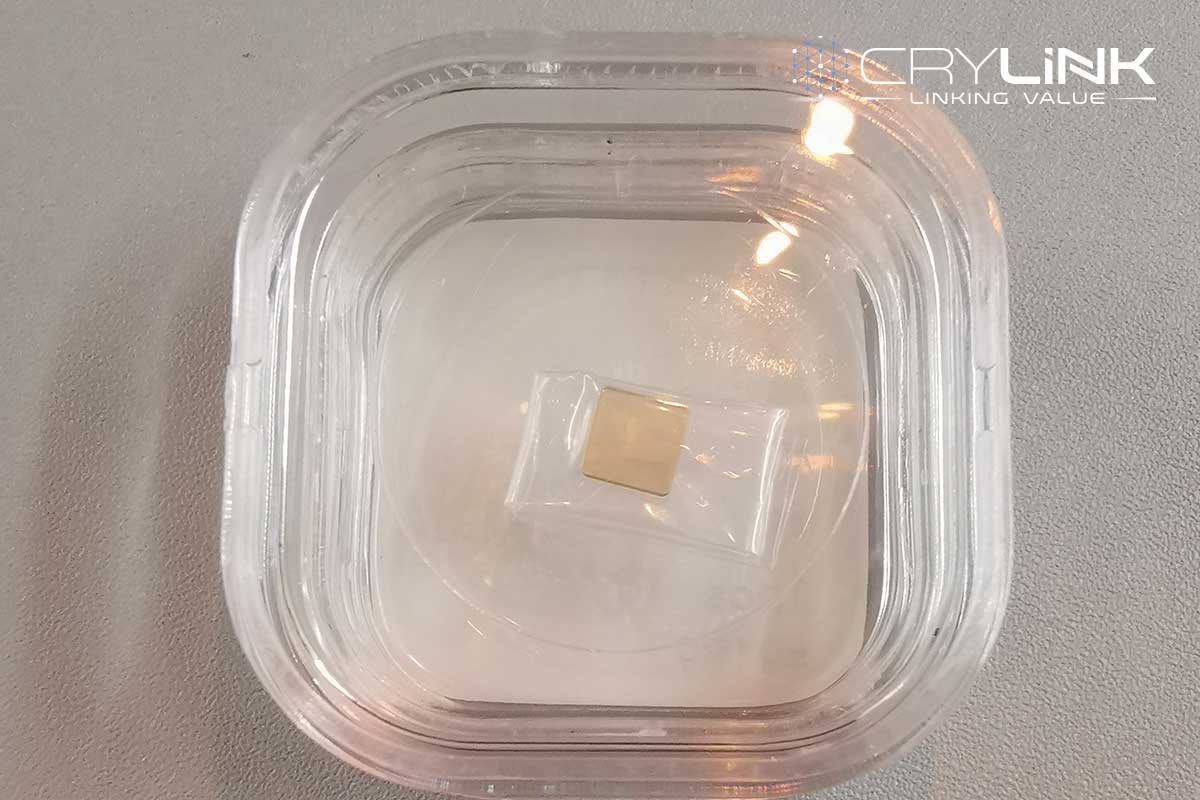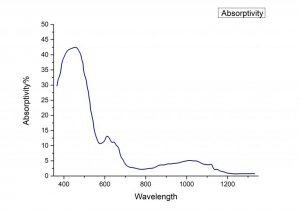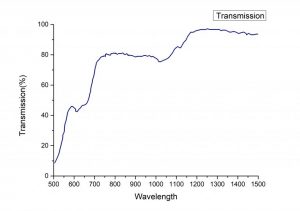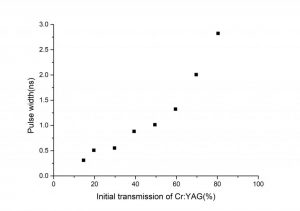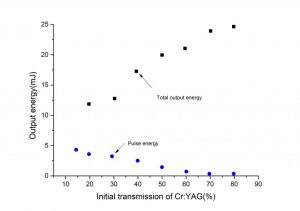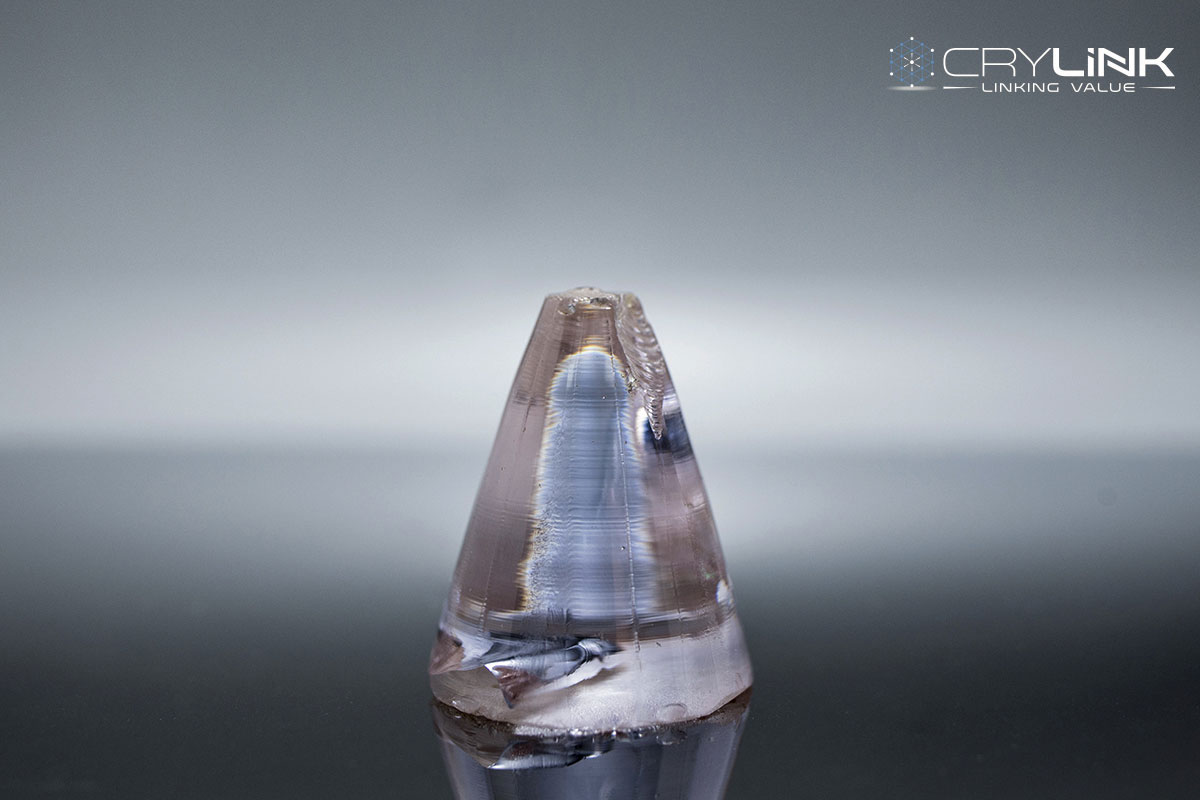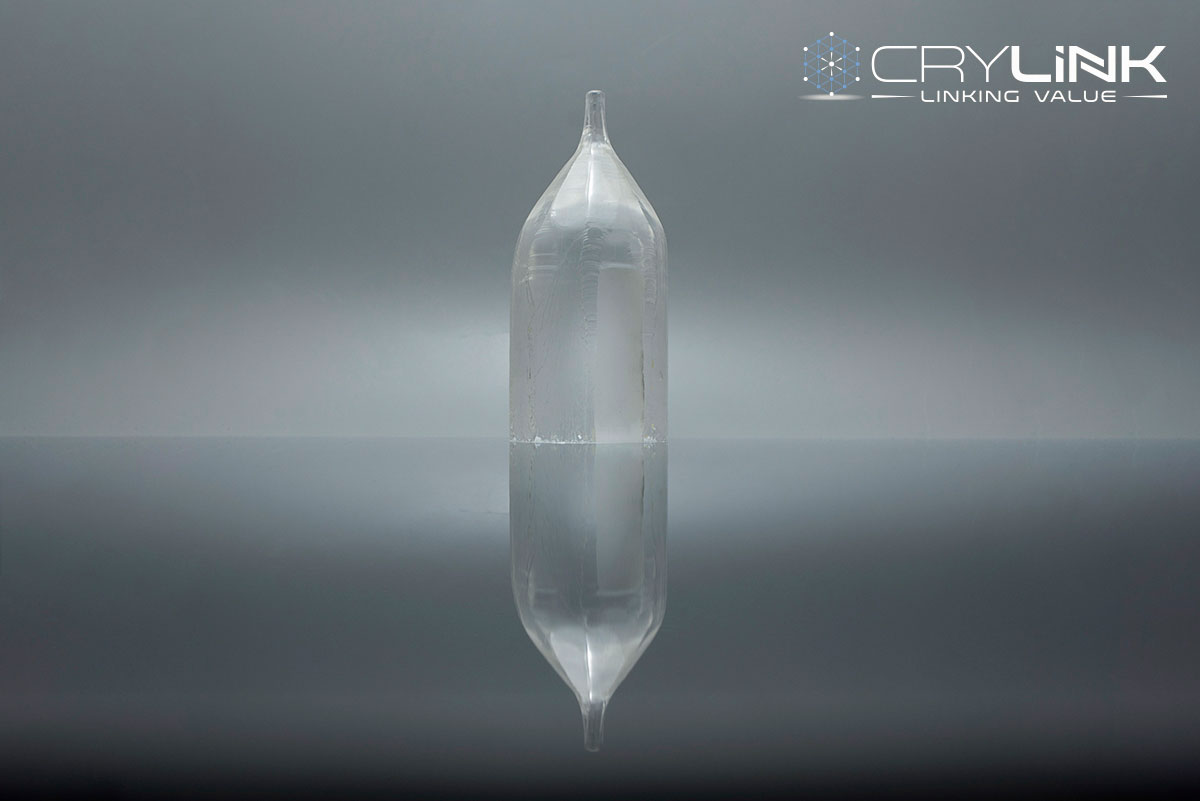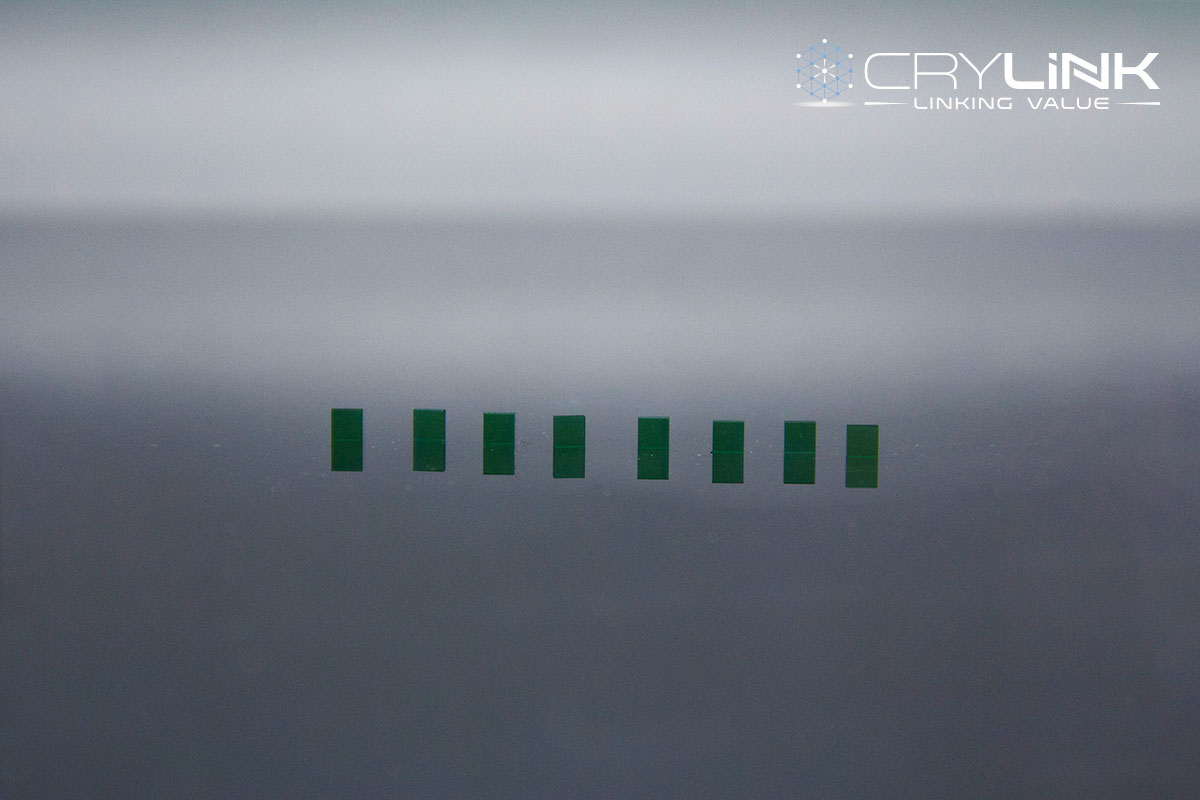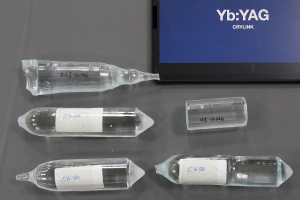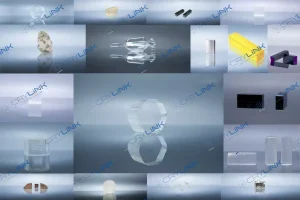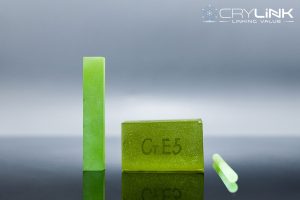Cr: YAG
Cr:YAG Crystal for 1064nm Laser
Coating: AR@1064nm,R<0.2%;
Damage Threshold: up to 1 GW;
The firmness should pass the environmental test of military products;
Cr:YAG Crystal case (2)
5*5*0.95mm;
T0=95%;
Coating: AR/AR@1064nm;
Cr:YAG Crystal case (3)
Size: Φ10×3 mm;
Initial transmission: T0=55%±1%, T0=65%±1%;
Coating: AR/AR@1064nm, R<0.2%
Cr:YAG Crystal case (4)
Diameter: φ7mm;
Initial Transmission: T0 = 40%;
Double-sided AR Coating Reflectivity: ≤ 0.2% (@ 1064nm)
Cr:YAG Crystal case (5)
Size: φ7×2.8 mm;
Double-sided AR Coating Reflectivity: ≤0.2% (@ 1064nm)
Material Processing
Medical Applications
- Passive Q-switch for Nd: YAG laser
- Remote sensing
- 3D scanning
- Lidar system
Cr4+:YAG crystal can be used not only as Q-switch but also as gain medium because of its excellent physicochemical properties. The Q-switch operation of pulse and CW Nd:YAG lasers has been realized by using Cr4+:YAG as Q-switch, and the CW tunable and self-mode-locked operation has also been realized by using CR4 +: YAG as gain medium. Compared with the traditional saturable absorber, Cr: YAG is superior to the traditional saturable absorber in many aspects. The doping concentration of Cr4+ ion in Cr4+:YAG is as high as 1018 cm-3, which can effectively reduce the size of passive Q-switch elements. It is beneficial to achieve high optical conversion efficiency, integration, and compact passive Q-switch laser.
- High thermal conductivity
- High damage threshold(>500MW/cm2)
- Excellent physicochemical properties
- Radiation stability
| Passively Q-switched mode locking in a compact Nd:GdVO4/Cr:YAG self-Raman laser J. Peng et al. / Optics Communications 285 (2012) 5334–5336 |
| Passively Q-switched a-cut Nd:GdVO4 self-Raman laser with Cr:YAG J.Y. Peng et al. / Optics & Laser Technology 44 (2012) 2175–2177 |
| Temperature dependence of optical properties in Nd/Cr:YAG materials Y. Honda et al. / Journal of Luminescence 148 (2014) 342–346 |
| Comparative study between Nd:GYSGG and Nd:YAG lasers passively Q-switched by a Cr:YAG crystal H.-Y. Lin et al. / Optik 156 (2018) 260–264 |
| Dynamics of a Q-switched Nd:YVO4/Cr:YAG laser under periodic modulation Results in Physics 12 (2019) 908–913 |
If you can’t find the Literature you want, Contact us to get the PDF Get the Literature
| Sub-100-fs mode-locking of the Cr:YAG laser using monolayer graphene saturable absorber CLEO:2013 Technical Digest OSA 2013 |
| Measurement of the Frequency of Acetylene Transitions at 1540 nm with a Mode-Locked Cr:YAG Laser 2005 Digest of the LEOS Summer Topical Meetings |
| Mapping of Cr ions and refraction index profile in Cr:YAG crystal fiber with double-cladding structure Conference on Lasers and Electro-Optics, 2003. CLEO ’03. |
| A typical behavior of Cr:YAG passively switched Nd:YVO/sub 4/ microlasers at high-pumping rates 454 / CLEO 2000 / THURSDAY AFTERNOON |
| High peak power output of a diode-pumped Q-switched and mode locked Nd:LuVO4 with Cr:YAG saturable absorber Year: 2013 , Volume: 49 , Issue: 5,IEEE Journals & Magazines |
| Composite Yb:YAG/Cr:YAG ceramics self-Q-switched laser 2007 Conference on Lasers and Electro-Optics (CLEO) |
| Spectral broadening of 50 fs Cr:YAG pulses around 1.5 μm in the tapered fiber Conference on Lasers and Electro-Optics, 2003. CLEO ’03. |
| Single-frequency operation of a Cr:YAG laser from 1332 nm to 1554 nm THURSDAY MORNlNG / CLCU 2000 / 435 |
| High Temperature Operation of Passively Q-switched,Cr:YAG/Nd:YAG Micro-Laser for Ignition of Engines 978-1-4244-4080-1/09/$25.00 @2009 IEEE |
| Carbon-nanotube mode-locked Cr:YAG laser OSA / CLEO/QELS 2010 |
| Experimental Research on Passively Q-switched Yb:YAG Microchip Lasers with A Nd,Cr:YAG as Saturable Absorber 2016 15th International Conference on Optical Communications and Networks (ICOCN) |
Cr:YAG crystals crylink have supplied
| T0 | Size | Coating | Orientation |
| 20% | Φ7×3.1mm | ||
| Φ7x4mm | |||
| 30% | Φ7×2.53mm | ||
| Φ7×2.6mm | |||
| 35% | Φ7×2.53mm | ||
| Φ7×2.85mm | |||
| 40% | Φ7×2.1mm | ||
| Φ7×2.3mm | |||
| 50% | Φ7×2.8mm | Coated | |
| 75% | 3x3x1.3mm | S1:AR@1030nm,S2:uncoated | 100 |
| 80% | 3x3x1.05mm | S1:AR@1030nm,S2:uncoated | 100 |
| 85% | 3x3x1.3mm | S1:AR@1030nm,S2:uncoated | 100 |
| 95% | 5x5x0.95mm | AR/AR@1064nm | 100 |
Parameter
| Property | Value |
| Chemical formula | Cr4+:Y3Al5O12 |
| Crystal structure | cubic – la3d |
| Lattice parameters, Å | 12.01 |
| Orientation | [100] or [110] < ±0.5° |
| Mass density | 4.56 g/cm3 |
| Mohs hardness | 8.5 |
| Young’s modulus | 335 GPa |
| Tensile strength | 2 GPa |
| Melting point | 1970°C |
| Thermal conductivity | 0.1213 |
| Specific Heat/ (J·g-1·K-1) | 0.59 |
| Thermal Expansion /(10-6/°C@25°C) | 7.8 <111> 7.7 <110> 8.2 <100> |
| Thermal shock resistance parameter | 800 W/m |
| Extinction Ratio | 25dB |
| Poisson Ratio | 0.25 |
| Refractive Index @1064 nm | 1.83 |
| Charge compensating ion | Ca2+, Mg2+ |
| Property | Value |
| Optical Density | 0.1 to 0.8 |
| Fluorescence lifetime | 3.4μs |
| Concentrations | 0.5 mol % ~ 3 mol % |
| Emission wavelength | 1350 nm ~ 1600 nm |
| Absorption Coefficient | 1.0 cm-1 ~ 7 cm-1 |
| Ground state absorption cross section | 4.3×10-18 cm2 |
| Emission state absorption cross section | 8.2×10-19 cm2 |
| Transmission | 10% to 90% |
| Coatings | AR≤ 0.2% @1064nm |
| Damage Threshold | > 500 MW / cm2 |
| Property | Value |
| Orientation Tolerence | < 0.5° |
| Thickness/Diameter Tolerance | ±0.05 mm |
| Surface Flatness | <λ/8@632 nm |
| Wavefront Distortion | <λ/4@632 nm |
| Surface Quality | 10/5 |
| Parallel | 10〞 |
| Perpendicular | 5ˊ |
| Clear Aperture | >90% |
| Chamfer | <0.1×45° |
| HR coating | <= 0.2% (@ 1340nm) |
| Maximum dimensions | 2*2-15*15 mm×20mm |

